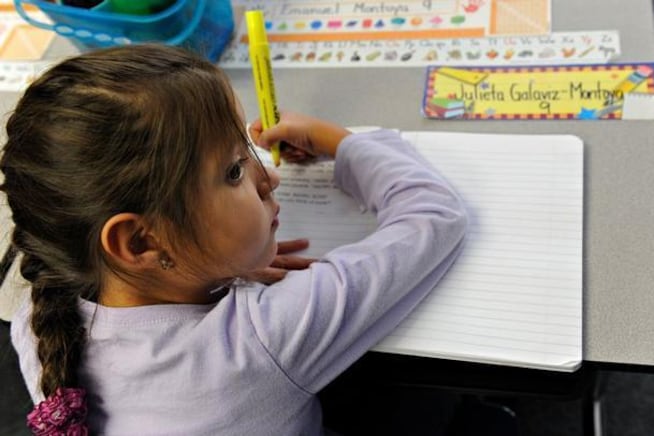Going against the current, the Sheridan school district just south of Denver this week released a hybrid plan to return students to school this fall.
The plan will allow elementary school students to return to in-person classes five days a week, but will limit their class sizes to 12.
Older students will alternate learning from home and taking classes on campus. Students in grades nine and 10 would attend in the morning and students in grades 11 and 12 in the afternoon. All of those students would spend the other half of the day taking classes online. Middle schools would be structured similarly to only have 50% of students in school buildings at any given time.
“Even though some of the directives are that you can have 20 to 25 students, we’re not doing that,” Superintendent Pat Sandos said in a statement.
While a teacher may still have a class of 24 students, for example, the students would be split between two rooms. The teacher would spend alternating days in each room. When the teacher isn’t in one room, those students would be watching the teacher’s instruction live through Zoom, and would have an adult such as a paraprofessional, instructional support assistant, or substitute in their room to assist.
Shirley Miles, Sheridan’s chief academic officer, said district staff have been cleaning school buildings to clear closets and find space for those classes in libraries, gyms, flex rooms, and art and music rooms.
Sheridan will also have an option for any student to continue remote learning the whole year.
Those students would learn remotely from teachers, who would be in school buildings. Students would watch their teacher’s classroom live.
The district plans to put a tripod-mounted camera in each classroom, to provide video and audio. The district will also have headphones available for students who request them.
Teachers can still request to work remotely if they are at high risk, but could be teaching students who are in a school building, or at home.
Matt Blomquist, president of the Sheridan teachers union, said that teachers have concerns.
“I don’t think it helps teachers with their fears,” Blomquist said.
A survey sent out by the union to staff showed as of late Thursday that 30% of staff that responded would still prefer the district start the year with an online-only model. Additionally, 51% of respondents said the district’s plan helps them feel at least somewhat safe, but 21% said the plan doesn’t make them feel safe at all.
Blomquist said staff didn’t have a say in creating the plan and now want to bargain with the district about some of their concerns. One of them is that teachers may not have direct or equal access to all of their students at the same time.
“Only having access to half of their students at any given time — I appreciate the district doing what they can,” Blomquist said, “but I just don’t see that as a really viable solution.”
Miles said that the plan was created with safety as the primary driver.
“We stuck from the beginning to the idea that we would build our model around that 6 feet of social distancing,” Miles said.
Parents weren’t surveyed, but anecdotally, Shirley said many families wanted students to return to school in person.
Miles said that part of why elementary school students will be in classes in the school building all day is to take into account parents who may need to be back at work.
For older students, Miles said the district considered that many of those students could be working or watching younger siblings who choose to learn remotely, and so wanted to give them the option to be home at least some of the day.
Then there are the social and emotional components the district considered, she said.
“We want to make sure we see their faces everyday,” Miles said. “We want to make sure that we are in contact with them that we could see them if their families needed any support.”
One parent, Maria Elsa Rodriguez, who is also working as a teacher assistant, said that she supports the plan.
“As an employee, I know the district isn’t going to put me in danger,” Rodriguez said. “As a mom, I am a little afraid of sending my kids to school because I have to protect them.”
She said she will start educating her children now about how to stay safe when in school.
The school year will start Aug. 17 with a two-week “boot camp” to allow teachers and students to practice and get better at using online tools. Part of that is in case anyone has to switch to online learning because of an exposure or outbreak.






